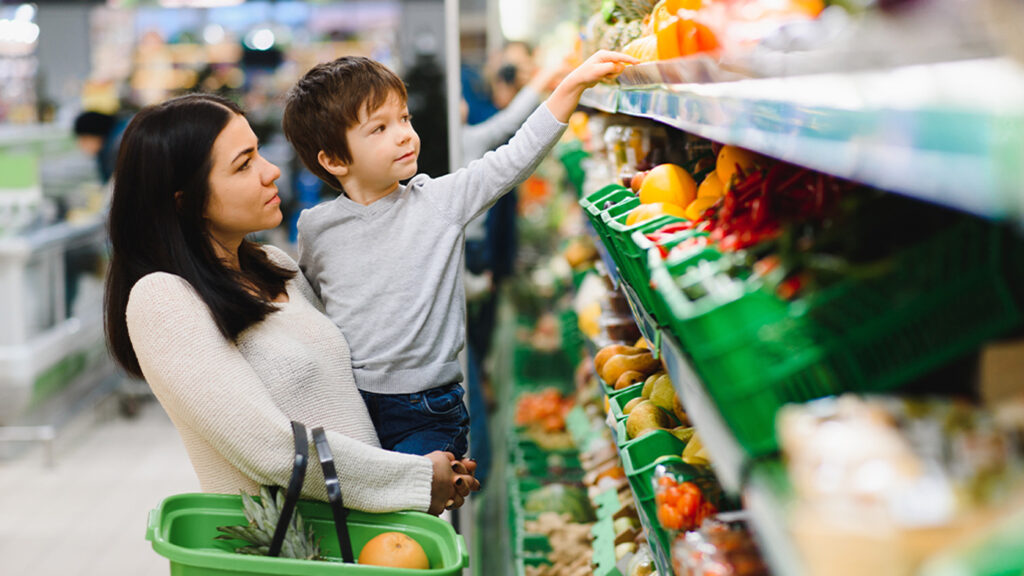Everything we know about grocery shopping has changed. The pandemic, recent news events, and inflation have impacted consumer shopping behaviors. Grocery stores had nearly cracked the code on consumer engagement, merchandising their stores to appeal to the need for community-based environments. Then Covid hit, and the consumer moved online.
No one could have predicted that online grocery shopping would gain such momentum. Nevertheless, the annual global growth of online grocery shopping has exploded at a compounded rate of 24.8% this year, with a forecasted revenue expected to exceed $1.1 trillion by 2027. A sizable leap considering that before the pandemic, only 19% of consumers had heard of, let alone shopped for groceries online. Over the last year, that number has nearly tripled. According to Coresight Research, 54.3 % of U.S. adults have purchased groceries online in the past 12 months, and 47% plan to continue doing so in the next year.
 Anjee Solanki
Anjee Solanki
“Annual global growth of online grocery shopping has exploded at a compounded rate of 24.8% this year, with a forecasted revenue expected to exceed $1.1 trillion by 2027. A sizable leap considering that before the pandemic, only 19% of consumers had heard of, let alone shopped for groceries online. ”
Supermarkets are not dead
Value and convenience rank highest across generations concerning grocery shopping, especially among Millennials and Gen-Z. Walmart, Target, Kroger and Costco were the most popular among the younger demographics for in-store shopping, while Walmart Online attracts Gen-X. Overall, the top three grocers in the U.S. were Walmart, Kroger and Costco. According to Numerator, Walmart held an 18% grocery market share at the end of 2021, followed by Kroger (8.8%), Costco (6.4%), Sam’s Club (3.6%) and Aldi (2.3%), respectively.
Health-conscious young shoppers who prefer cooking their meals at home are more inclined to visit groceries in-store at least three times a week for staples like fresh fruits, vegetables, and meat. Although they find stores super-crowded and are often frustrated by long checkout lines, in-store still provides a better consumer experience. Compared to bad online experiences, Millennials and Gen-Z shoppers encountered late deliveries, damaged purchases, and out-of-stock items. And surprisingly, a growing number of these shoppers –41% to be exact, find shopping for groceries in-store relaxing.
Consumers increasingly realize that grocery shopping doesn’t have to be a chore. As a result, the new grocery shopping experience should be more than just another place to spend money. It is important to remember that grocery stores remain relevant in a rapidly changing retail landscape. They will need to transform the shopping experience into an opportunity to engage and inform customers.
Consumer spending shifts
Nearly every American household spends a significant amount of its monthly budget on food. According to the USDA, the average U.S. family spends about $870 monthly on groceries. And that’s when they leverage coupons and price comparisons while shopping.
Last year, U.S. consumers spent an average of 10.3% of their annual household income on food at home (5.2 percent) and food away from home (5.1 percent). Annual food-at-home prices, impacted by inflation and product price increases, top the list with meat, fish, and fresh produce.
What consumers spend on groceries varies by region and socioeconomic status. However, most Americans’ grocery dollars go toward fresh fruits and vegetables, chicken and fish, milk and eggs. So, where are consumers spending their grocery budget? First, let’s take a look at some of the top product categories sold in grocery stores last year:
Americans spent more than $7.5billion on hot dogs and sausages, followed by chicken and steak.
- According to the American Frozen Food Institute, nearly all frozen food saw dramatic growth, including seafood (+35.3%), poultry (+34.7%), and appetizers (+28.9%)
- Yogurt and dairy products are next on the list, as Americans lean toward healthy food products with immunity-supporting probiotics and a zero-sugar.
- Canned goods like pasta sauce, soup and tuna, perhaps due to their long shelf-life, come in next. The global canned food market will be valued at $100 Million in 2021, with an anticipated growth of 4.2% by 2030.
- The most surprising category considering the shift toward healthy eating, was carbonated drinks, which consistently topped the list of Amazon’s bestselling products (updated hourly).
Online grocery shopping is a game changer for consumers. The convenience it offers – from the expansive selection of goods to pick from to the delivery options provided – makes this one of the most popular ways to shop for groceries. And although some consumers prefer to shop online for their groceries, the in-store shopping experience can be just as rewarding. In addition, grocery stores are havens of the community. They provide us with places to meet people and interact with others, as well as help us make healthy decisions about food. Therefore, we must consider the benefits of blending these two communities into an omnichannel solution that provides the best experience for consumers.
Do you prefer shopping in-store or online? If in-store, what’s your favorite grocery store? Please share your insights with me on LinkedIn.



 Steig Seaward
Steig Seaward
 Aaron Jodka
Aaron Jodka